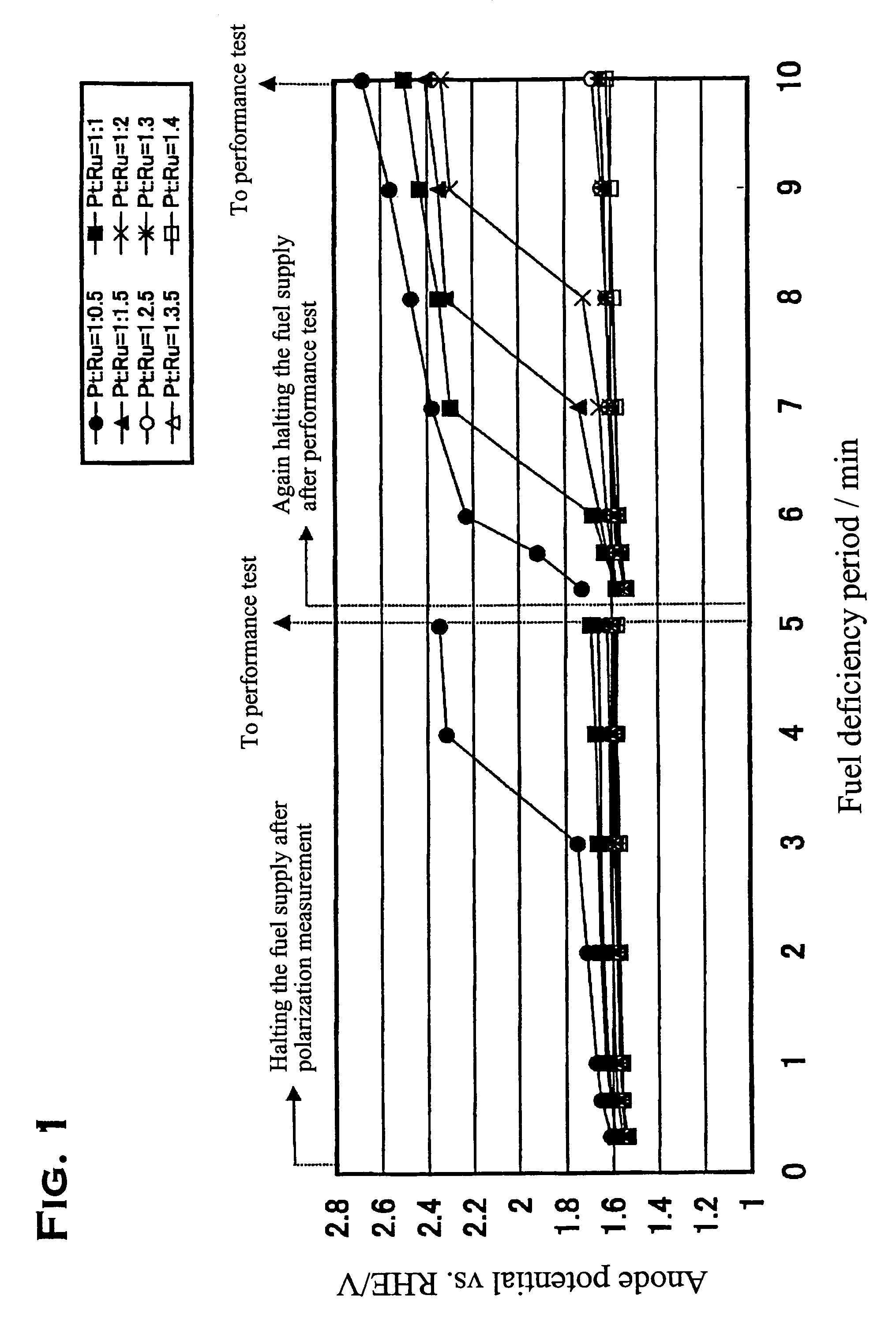Catalyst for use in fuel electrode of polymer solid electrolyte type fuel cell
a fuel electrode and polymer solid electrolyte technology, which is applied in the direction of cell components, physical/chemical process catalysts, metal/metal-oxide/metal-hydroxide catalysts, etc., can solve the problem of degrading the activity of the catalyst, and achieve the effect of increasing the area for the adhesion of the catalyst, reducing the exploitation efficiency of the catalyst particles, and increasing the surface area
- Summary
- Abstract
- Description
- Claims
- Application Information
AI Technical Summary
Benefits of technology
Problems solved by technology
Method used
Image
Examples
Embodiment Construction
[0023]Description will be made below on the preferred embodiment of the present invention with reference to the drawing.
[0024]In the present embodiment, platinum / ruthenium alloy catalysts having various loading ratios and loading densities were produced, and the characteristics thereof were to be confirmed. The production of the catalysts was performed by preliminarily producing platinum catalysts in which platinum was supported on the above described carbon powder; making these catalysts support ruthenium thereon through impregnating these catalysts with a ruthenium compound solution; and alloying the supported metals with each other through an additional heat treatment.
[Selection of Carriers]
[0025]The carrier used in the present embodiment was a commercially available carbon fine powder (brand name: Ketjenblack EC). The specific surface area of the carrier was measured by the BET one-point method to be 800 m2 / g.
[Preparation of a Platinum Catalyst]
[0026]30 g of the above described ...
PUM
| Property | Measurement | Unit |
|---|---|---|
| specific surface area | aaaaa | aaaaa |
| specific surface area | aaaaa | aaaaa |
| boiling point | aaaaa | aaaaa |
Abstract
Description
Claims
Application Information
 Login to View More
Login to View More - R&D
- Intellectual Property
- Life Sciences
- Materials
- Tech Scout
- Unparalleled Data Quality
- Higher Quality Content
- 60% Fewer Hallucinations
Browse by: Latest US Patents, China's latest patents, Technical Efficacy Thesaurus, Application Domain, Technology Topic, Popular Technical Reports.
© 2025 PatSnap. All rights reserved.Legal|Privacy policy|Modern Slavery Act Transparency Statement|Sitemap|About US| Contact US: help@patsnap.com


